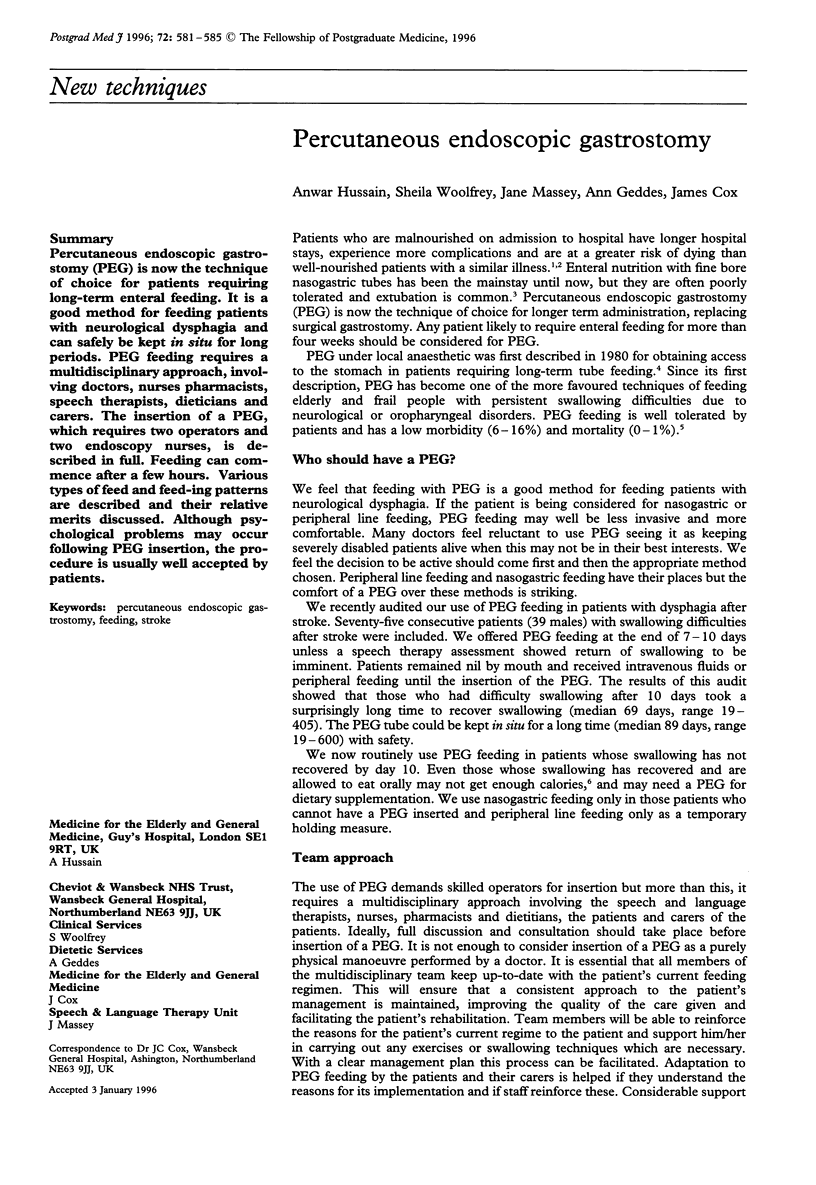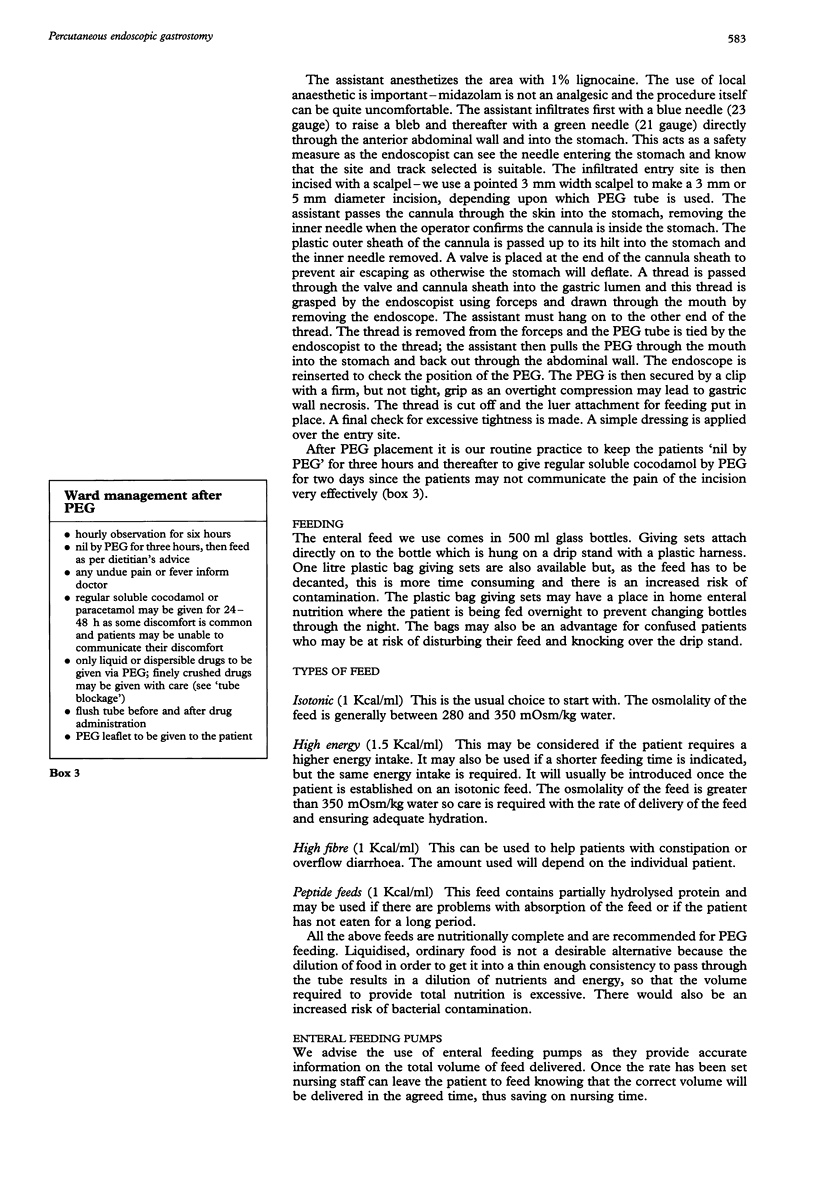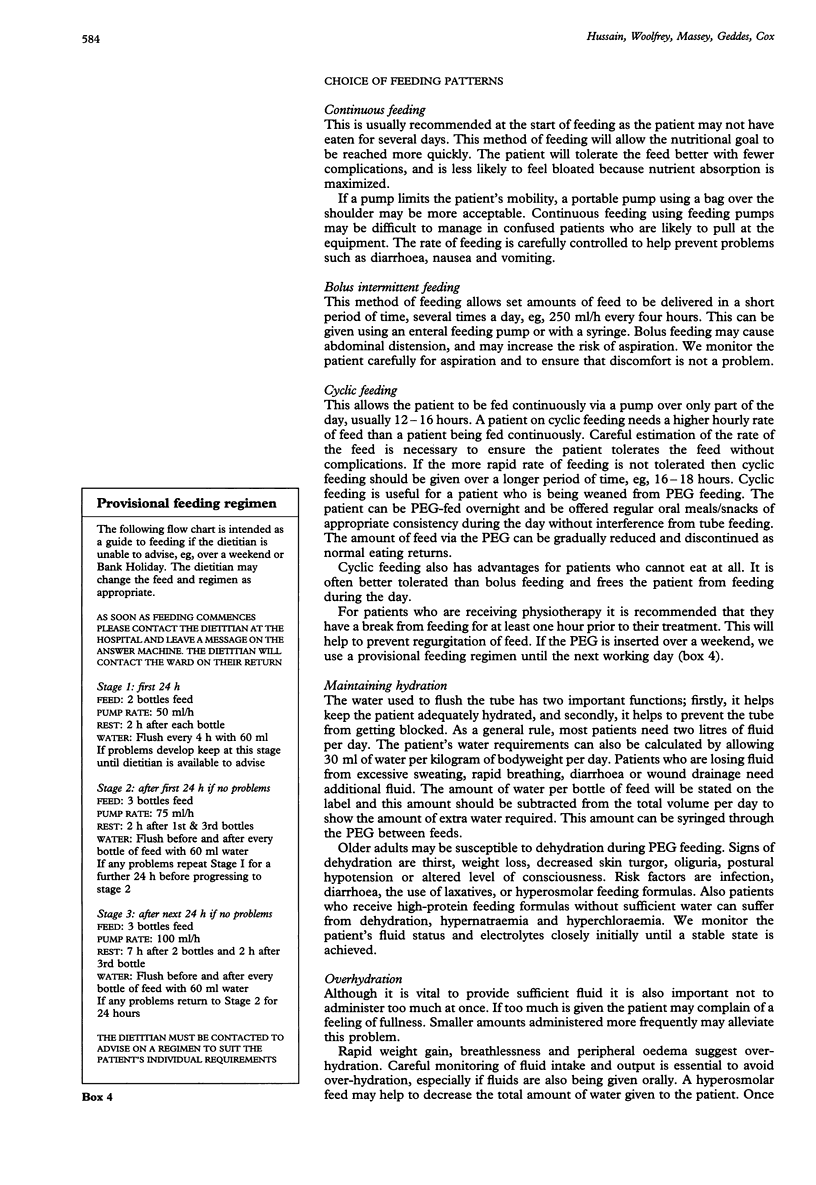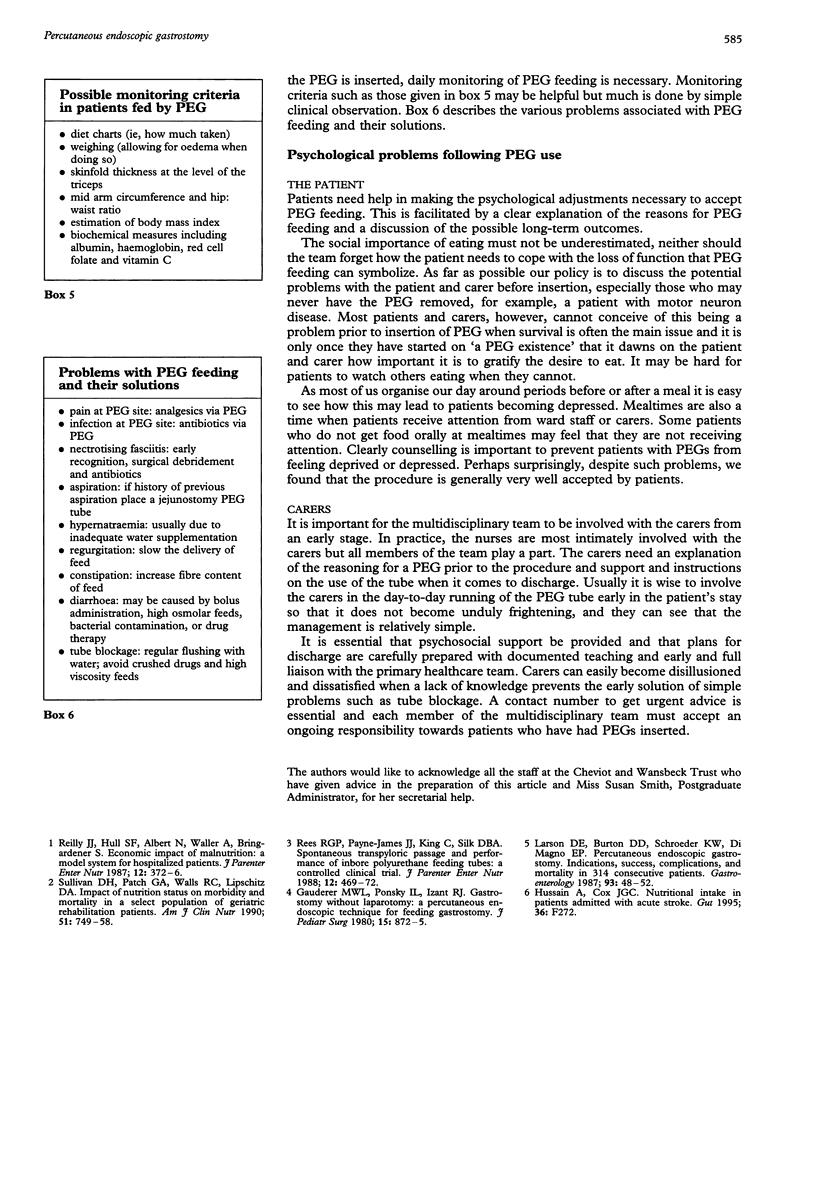Abstract
Percutaneous endoscopic gastrostomy (PEG) is now the technique of choice for patients requiring long-term enteral feeding. It is a good method for feeding patients with neurological dysphagia and can safely be kept in situ for long periods. PEG feeding requires a multidisciplinary approach, involving doctors, nurses, pharmacists, speech therapists, dieticians and carers. The insertion of a PEG, which requires two operators and two endoscopy nurses, is described in full. Feeding can commence after a few hours. Various types of feed and feed-ing patterns are described and their relative merits discussed. Although psychological problems may occur following PEG insertion, the procedure is usually well accepted by patients.
Full text
PDF




Selected References
These references are in PubMed. This may not be the complete list of references from this article.
- Gauderer M. W., Ponsky J. L., Izant R. J., Jr Gastrostomy without laparotomy: a percutaneous endoscopic technique. J Pediatr Surg. 1980 Dec;15(6):872–875. doi: 10.1016/s0022-3468(80)80296-x. [DOI] [PubMed] [Google Scholar]
- Larson D. E., Burton D. D., Schroeder K. W., DiMagno E. P. Percutaneous endoscopic gastrostomy. Indications, success, complications, and mortality in 314 consecutive patients. Gastroenterology. 1987 Jul;93(1):48–52. [PubMed] [Google Scholar]
- Rees R. G., Payne-James J. J., King C., Silk D. B. Spontaneous transpyloric passage and performance of 'fine bore' polyurethane feeding tubes: a controlled clinical trial. JPEN J Parenter Enteral Nutr. 1988 Sep-Oct;12(5):469–472. doi: 10.1177/0148607188012005469. [DOI] [PubMed] [Google Scholar]
- Sullivan D. H., Patch G. A., Walls R. C., Lipschitz D. A. Impact of nutrition status on morbidity and mortality in a select population of geriatric rehabilitation patients. Am J Clin Nutr. 1990 May;51(5):749–758. doi: 10.1093/ajcn/51.5.749. [DOI] [PubMed] [Google Scholar]


